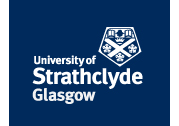West Siberia
Population: 15,108,000. Biggest city: Novosibirsk (1,450,000)
Flying time from Moscow to Novosibirsk (the biggest city): 4 hours.
Time difference from Moscow: + 3-4 hours.
Urban population: 71%. Rural population: 29%.
Area: 2,427,200 sq. km (about quarter the size of USA). Density:
6.2 persons / sq. km.
Climate zones: Ranging from mixed forests and steppes in the far south
to tundra and arctic deserts in the far north.
Socio-economic indicators (1999 Duma Vote) The official economic statistics give a positive profile to this region. Not only is GDP in total high due to its substantial total population, but also reported GDP per capita is almost half again the Russian mean, as is industrial productivity. In keeping with this, wage levels are a third above the national average. However, the likelihood of getting paid in full is 14 percent below the national level. The region's economy is, moreover, relatively low in privatized ex-state enterprises, and only average in new private sector employment.
Levels of social welfare
are close to the national mean in terms of life expectancy for men and
women, and the proportion of students in higher education. However, popular
attitudes in the region give a negative picture of West Siberia. Compared
to other regions, people are much less likely to expect life to improve,
and are even more negative in their rating of the national economy.
Administrative divisions:
| Tyumen Oblast (Pop.
3,177,100) Capital: Tyumen (545,000) |
Khanty-Mansi Autonomous Okrug (within Tyumen
Oblast: Pop. 1,326,000) Capital: Khanty-Mansiysk (34,000) |
| Kemerovo Oblast (Pop. 3,042,200) Capital: Kemerovo (552,000) |
Tomsk Oblast (Pop.
1,071,800) Capital: Tomsk |
| Novosibirsk Oblast (Pop. 2,744,600) Capital: Novosibirsk (1,450,000) |
Yamalo-Nenets Autonomous Okrug (within Tyumen
Oblast: Pop. 480,000) Capital: Salekhard (29,000) |
| Altai Krai (Pop. 2,675,200) Capital: Barnaul (658,000) |
Gorno-Altai Republic (Pop. 202,100) Capital: Gorno-Altaysk (47,000) |
| Omsk Oblast (Pop.
2,174,200) Capital: Omsk (1,190,000) |


